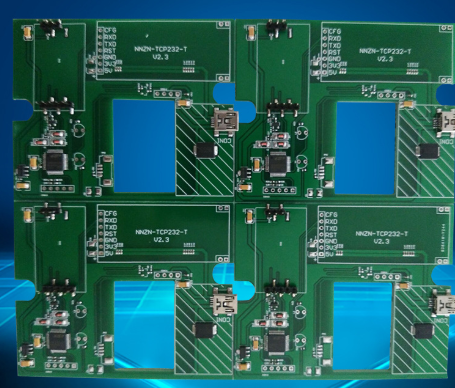The experimental data is presented to prove that the soldering strength of OSP surface treatment is stronger than that of ENIG surface treatment PCB board. However, it is also confirmed that the solder strength of OSP will deteriorate over time. Therefore, the longer the product is sold on the market, the higher the defect rate should be.
The experimental data is presented to prove that the soldering strength of OSP surface treatment is stronger than that of ENIG surface treatment PCB. However, it is also confirmed that the solder strength of OSP will deteriorate over time. Therefore, the longer the product is sold on the market, the higher the defect rate should be.
Dear friends have been in the SMT and PCBA circuit board assembly industry for a long time. Perhaps I have heard an expert or senior experience sharing and telling you that "The soldering strength of the OSP surface treatment circuit board is stronger than the ENIG surface treatment." A more professional term should be Say "The solder joint strength of the copper base circuit board is stronger than that of the nickel base", but few people seem to be able to come up with a data to tell you "How much stronger the soldering strength of OSP is than ENIG?"

Do you know what ENIG (Electroless Nickel Immersion Gold) surface treatment circuit board is? What circuit board is ENIG surface treatment? What are the advantages and disadvantages?
Do you know what OSP (Organic Solderability Preservative) surface treatment circuit board is? What is OSP (organic solder protection film) surface treatment circuit board? What are the advantages and disadvantages?
I searched for many reports on the Internet, and finally found that the English version of the report [Strength of Lead-free BGA Spheres in High Speed Loading] published by "Niho Superior, Japan" is relatively simple and easy to understand. This article will basically use this This report serves as a material to illustrate the ability of OSP and ENIG welding to withstand stress.
Because portable devices are very popular nowadays, users accidentally drop them on the ground when taking them. Therefore, this report uses different Shear test speeds to weld BGA solder balls to OSP and The reliability of ENIG's two different surface treatments calculates the fracture energy (Fracture Energy) of its BGA solder ball as the standard for welding strength evaluation.
The test samples and conditions of this report are as follows. Readers who are interested in the details of the report can search for the name of the original report on the Internet and they should be able to find it:
▪ BGA ball diameter: 0.5+/-0.01mm
▪ Laminate: FR4
▪ Thickness: 1.6mm
▪ Using Solder Mask Defined Pad: 0.42+/-0.02mm
▪ Resist Thickness: 30-40um
▪ Circuit board surface treatment (Finish): OSP, ENIG (0.3um Ni/0.03um Au)
▪ Ball solder alloy: Sn-3.0Ag-0.5Cu, Sn-0.7Cu-0.05Ni-0.006Ge, 63Sn-37Pb
▪ Shear at speeds: 10, 100, 1000, 2000 and 4000 mm/sec
This report basically uses two test methods, thrust (Shear-test) and pull-test (Pull-test), but only the thrust report is used here. Interested readers can find this original report on the Internet. The thrust here is actually the lateral shear force of the solder ball (Shear)
It should be reminded that this report uses the "Fracture Energy" of the solder ball to calculate its welding strength, because when the maximum shear force occurs, the solder ball may not completely fall down. There are some possibilities. It is only a part of the crack, but the maximum thrust has been calculated. Therefore, only calculating the maximum shear force instead of the solder strength will be a bit distorted. The area of the enclosed area formed by the entire shear force and distance (above) should be calculated. It can represent the welding strength.
Average_fracture_energy_as_a_function_of_shear_speed
From the perspective of the entire report, the welding strength results for OSP and ENIG surface treatments can be summarized as the following conclusions:
▪ The faster the shear speed applied to the solder ball, regardless of whether the solder ball is soldered to the surface treatment of OSP or ENIG, its fracture energy (Fracture Energy) will decrease rapidly as the shear speed increases. This shows that the falling speed of the PCB product is a fatal injury to the solder strength of the electronic parts on the circuit board, and the heavier the part, the greater the damage, because F=ma. The higher the height of the fall, the more disadvantageous it is.
▪ For SAC305 solder, the rupture strength of the solder on the PCB OSP surface treatment board against shear force is better than that of the PCB ENIG surface treatment board, especially when the shear force speed is 100mm/sec, the difference is the most obvious, but it reaches 1,000 When the shear speed is above mm/sec, the gap between the two becomes smaller and smaller. This can explain that ENIG and OSP are not much different when doing a bare metal drop test, but OSP is obviously better than ENIG when doing a tumble test.
The report also specifically conducted experiments and comparisons for As reflow, Double reflow, and 200 (H) hours (Reflow + 200hr@150°C) at 150°C after reflow. The main purpose is to understand the influence of IMC (Intermetallic Compounds) on the solder strength of BGA solder balls under time and temperature conditions.